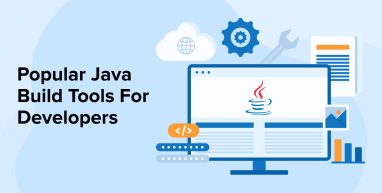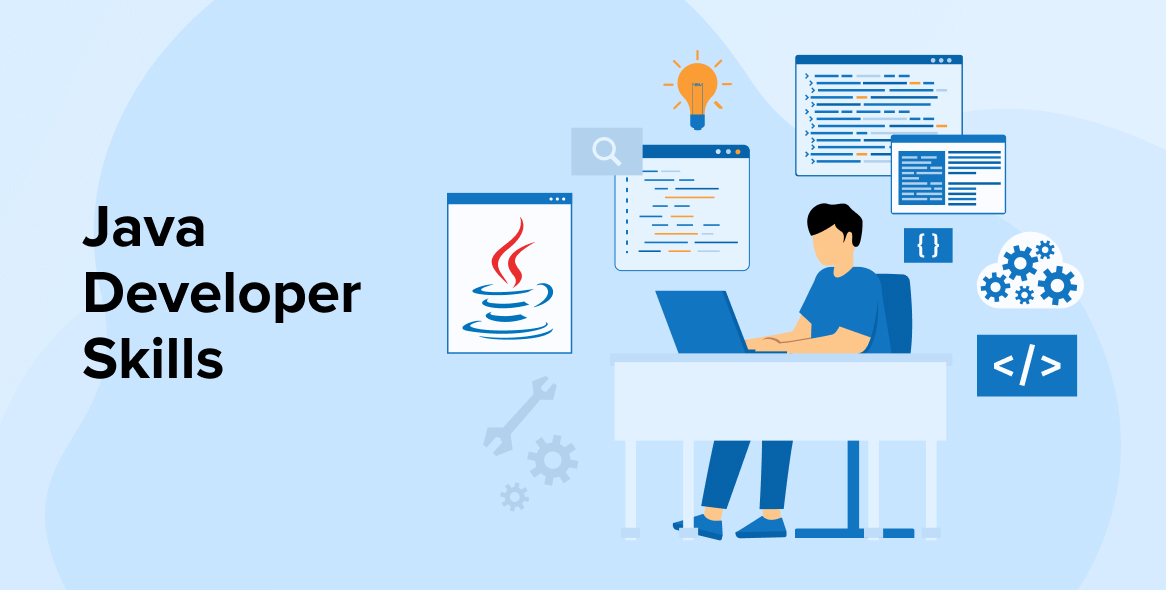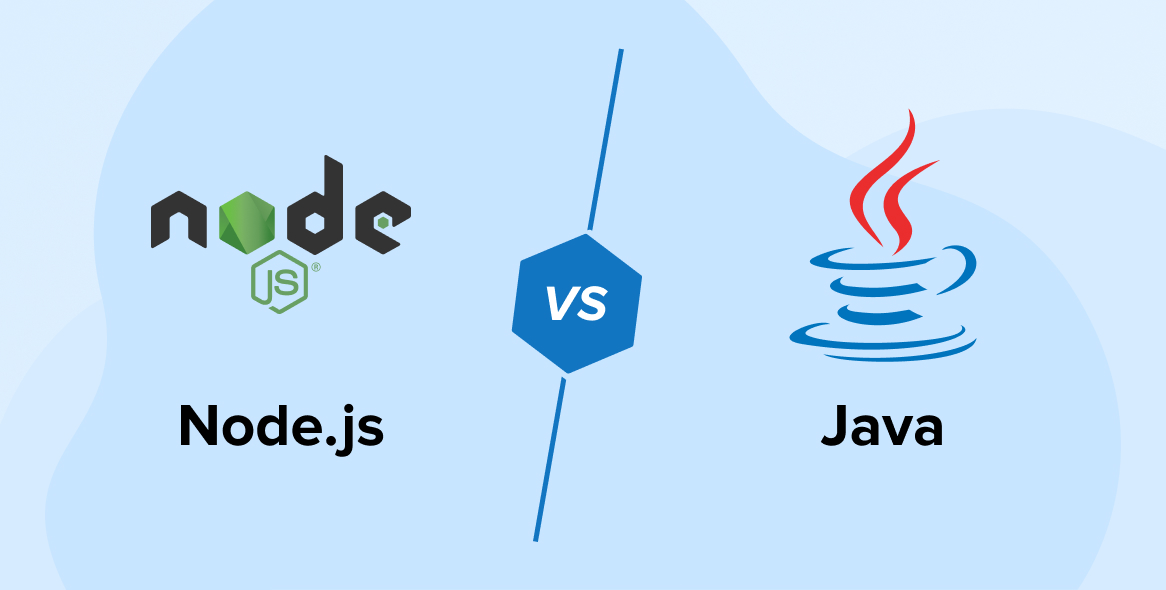
The tools we use for Java development define the product quality along with the outcome of the project. Java Build tools are used to transform raw code into a fully functional application. So, having the right one in your stack is critical for your project’s success.
The only problem here is that there are too many options to choose from. But fret not. Here, we explore the top build tools that are used to employ robust and reliable Java development services. Expert or beginner, agency or individual, the article promises insights that can help you find the right key to unlock the full potential of your Java project.
Along with the shortlisted tools, we also offer you a small guide on how to choose the right build tool for your software project at the end of the article. But first things first.
1. What is a Java Build Tool?
A tool that can structure a program-based utility as a command line so that it can automate the app development process is called a Build tool. In Java, these Build tools are used to compile code files into bytecode. The bytecode is then packed into executable files or resource libraries.
Managing dependencies becomes easy after automating the recurring tasks. This gives enough room to write and run tests before deploying the product. It also keeps human errors at a minimum, which is very helpful in meeting the expectations of the clients or end users.
During app development projects, developers would need tools that can automate simple and mundane processes to ensure consistency and dependability across different work environments. The Java build tool fits this description perfectly.
1.1 Benefits of Using Java Build Tools
Following are the benefits of using Java build tools:
- Efficiency and Automation: Java Build tools allow you to automate all the repetitive tasks so you can focus on the coding. Automation helps increase the efficiency and speed of the process.
- Improved Collaboration: These build tools offer standard project structures that promote teamwork. It helps you reduce setup errors and allows you to share the project configurations easily.
- Dependency Management: Java Build tools handle all the external frameworks and libraries, which helps prevent version conflicts and compatibility issues.
- Simplified Build and Deployment: Developers can streamline the development as well as deployment processes, which makes their releases smooth and predictable. Build tools also help reduce errors during the process.
- Quality Assurance: To ensure the quality of the code, Java Build tools integrate QA steps into the build process. All the issues are flagged automatically.
2. Top 7 Java Build Tools for Developers
Given below is a shortlist of the top Java Build tools that you can use in the software project to deliver a high-end digital product.
2.1 Apache Maven

Maven is a Java build automation tool. This open-source management tool can orchestrate multiple Java projects simultaneously. This enables the developers to map out the structure of the whole lifecycle. Of course, the documentation is essential for the process.
It is possible to easily integrate Maven with various Java frameworks and libraries because it consists of an extensive plugin ecosystem. In large-scale projects, this helps boost the build time optimization. Using Maven can speed up the whole development process as this build tool is based on a concept called Project Object Model or POM.
Maven is a complex tool compared to others. So, beginners may have a hard time learning it. Build tools like Apache Ant don’t have any formal conventions, but Maven comes with predefined goals. It also has much more advanced features than other Build automation tools, which is why it can seamlessly integrate with most of them.
Maven’s builds are based on models, so the output will be predefined, such as WAR, JAR, or metadata-based distribution. The coherency in project information makes it easy to generate documentation.
Maven enables users to reuse JARs across projects by encouraging them to utilize Jars’ central repository and other dependencies. This helps prevent issues related to backward compatibility.
2.2 Apache Ant with Ivy

Apache Ant is one of the best Java build tools. The Ant tasks and types libraries are called Antlibs. The common uses of Antlibs are to copy files, create directories, and automate code compilation. It is easily shareable with other users.
Apache Ant provides a bunch of in-built tasks to compile, assemble, test, and run Java apps. It lacks built-in dependency management, but Apache Ivy handles it well. Ivy is a sub-project in integration with Ant.
The deployment of Java apps to production servers is automated using Ant. This Build tool is very flexible. Along with Java applications, Ant also supports a variety of software projects for automating their build process.
It is possible because Apache Ant never forces any formal conventions. So, Java developers don’t have to follow any specific directory structure and have the freedom to organize their projects as they prefer.
Now, Ivy, who acts as the dependency manager for Ant, handles all the external modules and libraries necessary for your Java project. This helps maintain and manage the dependencies of your project.
2.3 Gradle

Gradle is regarded as a highly advanced Build automation tool. It is built upon one of the most robust, flexible, and domain-specific programming languages, i.e. Groovy/Kotlin.
Reading and maintaining the Gradle builds is easy in comparison to Ant’s, thanks to its intuitive scripting. Ant offers features for streamlined builds, but Gradle improves upon it with its capacities for powerful dependency management.
Onboarding new users is not an issue with Gradle, as it enjoys the support of a vast community forum and offers abundant training resources. Although Gradle offers great flexibility, for some, this lack of structure can be a little confusing. However, its build file does require a predefined set of dependencies to run commands.
Although Maven provides simplicity and prefers convention over configuration, using Gradle gives you both customizability and flexibility. Gradle has an edge over Maven in large and complex Java projects because of its advanced features, such as robust dependency management and Kotlin DSL.
If you are working on an enterprise-grade project, then Gradle might be the right build automation choice for you. The automated workflows from Gradle also help boost the productivity of the developers and the team.
2.4 SBT

SBT is a Java Build tool that is maintained by the community. The functionalities of SBT are extendable using various plugins. This plugin allows you to configure the JVM and the app and package it.
The packaging of the application is mainly concerned with the app launch (through a bat or bash script), managing dependency, and adding configuration and auxiliary files in the final distribution.
For app launch, you get executable scripts and a default app structure from the JavaAppPackaging archetype. There is a community-driven distribution of OpenJDK called AdoptOpenJDK. It is supported in the latest release of the SBT.
The SBT also supports various versions of Java and Scala thanks to its outstanding cross-build compatibility features. The Interactive Console of the SBT provides a user-friendly environment to execute commands and real-time feedback. This helps improve the software development experience as well.
Developers prefer SBT for large projects as it has great performance optimization features. Because its offerings include such advanced features, SBT becomes a complex build tool with a steep learning curve.
2.5 Jenkins

Jenkins is one of the most popular Java Build tools that supports various native Version Control Systems, including Git and Subversion. Being an automation server, Jenkins can automate the build process for Java and other software projects.
Triggering build projects from one testing environment to another is possible by building a pipeline using Jenkins. Interestingly, your build, test, and deployments are triggered automatically. This open-source Build tool has more than 8.5k Fork and 22k Star.
The Jenkins developer community has contributed a variety of plugins for automated testing. LambdaTest Jenkins Plugin is one such example. You can use it to integrate with a Jenkins CI server and run test scripts or suites on the LambdaTest online browser farm consisting of over 3000 operating systems, devices, and real browsers.
Connecting the Selenium Grid of LambdaTest with your Jenkins CI instance using this plugin enables you to run tests simultaneously on different devices and browsers. It also helps enhance your test runs’ speed during the CI process by using it to automate the test scripts from Selenium.
2.6 CMake

CMake is one of the best Java Build tools. Hundreds of companies including Venmo, Unacademy, and Paralect trust it. Cmake provides integrations for C++ Builder and Starship to generate workspaces and makefiles. The build process of this tool consists of two stages:
- Using CMake language’s CmakeLists.txt scripts for creating build files.
- The Native Build tools of the platform then read these files to build targets.
When a user specifies libraries, files, and executables, finding them is a tough job. But the CMake’s flexible structure enables system-wide location, making it easy to search them. However, CMake has to rely on the build files of other systems and is utilized with other native build environments.
Despite that CMake provides you with more control during the compilation process and managing libraries. CMake would prove to be very versatile if you are considering the Dowdy standard build system for cross-platform software development. On an important note, CMake has very limited support for Java IDEs. There are complex bugs and the community is small, but you can get extraordinary results once you get to know your way around.
2.7 Leiningen

Mainly used for Clojure projects, Leiningen has proved to be effective at handling Java project builds as well. It offers simple setup and project management capabilities.
Leiningen is also good at managing dependencies. It is a user-friendly Build tool that works seamlessly with Clojure. Although it supports Java, the tool is primarily geared for Clojure projects. Moreover, the community support for Leiningen is very small compared to famous Java Build tools such as Gradle and Maven.
3. A Short Guide to Choose the Right Java Build Tool
To ensure your software development project’s success, you must pick the right Java Build tool. Following a thorough and thoughtful approach to tool selection includes considering various factors like features, functionalities, and your team’s experience.
The step-by-step process for picking a suitable tool would look like this:
- Analyzing the Complexity of the Project: Kick off the selection process by analyzing the complexity level of your project. Java Build tools come in a wide range and every Build tool is designed to fulfill specific requirements. Determining the complexities of your project will help you narrow down your choices.
- Determine the Features You Require: List out the number of features you are looking for in a Build tool. From a plugin repository to incremental builds, if you need the feature, write it down.
- Learning Curve: Not all tools are easy to use. So, you have to consider the learning curve of a tool and your team’s familiarity with the tool. Your project might get delayed if your team is spending too much time learning how to use the tool. On the other hand, even if the tool has a steep learning curve because it comes with rich features then it is overall beneficial.
- An Experiment in a Sandbox Environment: You can test various Java Build tools in a sandbox environment to gain insights into their functioning and how they can fulfill your project requirements.
- Assess the Community and Support: Before deciding on a tool, you must also check out how strong community support it has. A vibrant community reflects the rich resources and support you can access while solving problems or learning Java development techniques.
- Focus on Your Workflow: A tool that can integrate seamlessly with your workflow and increase your productivity and team collaboration is the right fit for your project.
Don’t chase after a ‘one size fits all’ solution. There isn’t one. Every project has different requirements which makes each unique. By adopting a systematic approach, you can easily find the right Build tool that can fulfill your project requirements as well as your expectations.
4. Java Build Tools: A Quick Comparison
The Build tools we discussed above can all be used in a variety of Java projects. But each of them comes with its own set of features, pros, and cons. This table provides you with a quick assessment of every shortlisted Build tool.
| Java Build Tools | Unique features | Pros | Cons |
|---|---|---|---|
| Apache Maven |
|
|
|
| Ant with Ivy |
|
|
|
| Gradle |
|
|
|
| SBT |
|
|
|
| Jenkins |
|
|
|
| CMake |
|
|
|
| Leiningen |
|
|
|
5. Conclusion
Working with Java is challenging compared to other languages. But you can establish order amidst the chaos using the right build automation tools. However, you have to ensure that these tools align with your software project requirements. So carrying out thorough research beforehand becomes necessary. It allows you to evaluate the needs of your project, your team’s skills, and the capabilities of the tools. This enables you to decide among the top Java build tools that can simplify the software development process, improve code compilation, and ensure the success of the Java projects.






Comments
Leave a message...